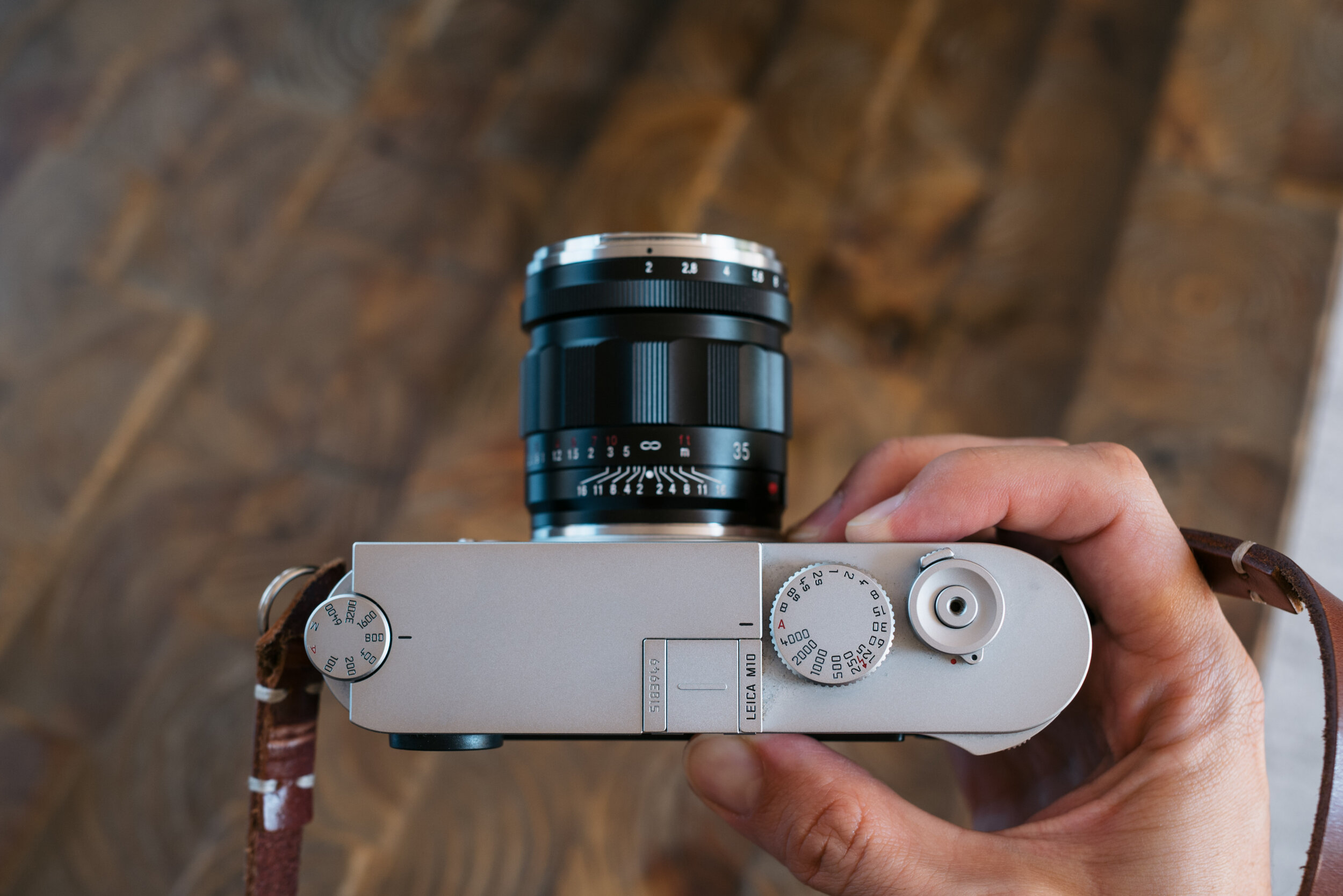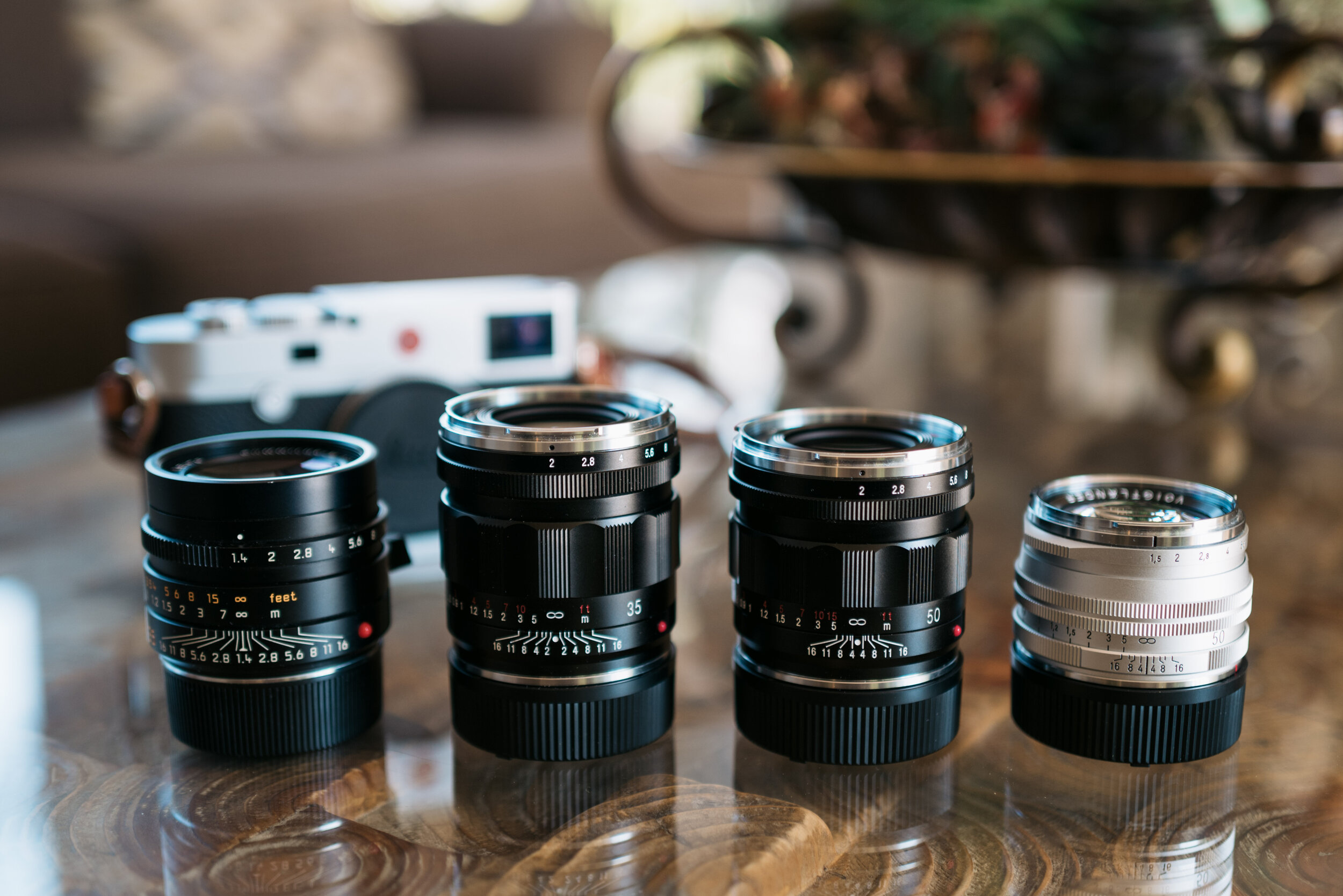Updated April 2025
Introduction
When Voigtlander released a 35mm sibling to its 50/2 APO Lanthar, I wasn’t really interested. I’m very happy with my 35 Summilux FLE and the Voigtlander 35/2 APO Lanthar is larger and slower. And while the APO Lanthar promises to be extremely well-corrected for all types of aberrations, my 35 FLE’s image quality never disappointed me.
But, Stephen Gandy from CameraQuest generously offered to lend me a copy for review. I happily agreed and took it to a camping trip to see how well I liked it on my Leica M10.
There weren’t many surprises. Just like the Voigtlander 50 APO, the 35 APO has ridiculously good image quality but is larger than alternatives.
Voigtlander 35 APO @f/2, Leica M10
Voigtlander 35 APO @f/2, Leica M10
Voigtlander 35 APO @f/2, Leica M10
Build quality
With all-metal construction, the Voigtlander 35 APO feels just as nice as a Leica. The only criticism I can make is that if you want to use a hood, it attaches with a bayonet mechanism which isn’t quite as nice as Leica’s screw-on hoods.
Size and feel
The Voigtlander 35 APO is only slightly longer than its 50mm sibling, but it’s just long enough that I’m not very happy with its size. The size particularly bothers me because it’s so much longer than other 35/2 lenses, and there are even f/1.4-f/1.2 lenses that are the same size or smaller. In contrast, the Voigtlander 50 APO is only slightly larger than other 50/2 lenses.
The good news is that the Voigtlander 35 APO is not very dense, so it doesn’t feel excessively heavy for a rangefinder lens.
Handling is good, except that the aperture ring is pretty far forward. The focus ring is very smooth with light resistance, with a focus throw of exactly 90 degrees. There is no focus bump or tab.
From left: Leica 35/1.4 FLE, Voigtlander 35 APO, Voigtlander 50 APO, Voigtlander 50/1.5 II
Viewfinder blockage
There is significant viewfinder blockage, which you wouldn’t have with a smaller 35mm lens such as the 35 Summicron or Voigtlander 35/2 Ultron.
Infinity, Leica M10
0.7m, Leica M10
Minimum focus distance
The Voigtlander 35 APO focuses down to 0.5m. My M10’s rangefinder coupling stops at 0.6m, but it’s still very handy having access to 0.5m using liveview. The Leica 35/2 APO focuses down to 0.3m, but 0.5m is close enough for most situations:
Voigtlander 35 APO @f/2, 0.5m, Leica M10
Image quality
Distortion:
The Voigtlander 35 APO has no detectable distortion.
Bokeh:
Under most situations, this lens produces very smooth and modern-looking bokeh. Transition zones look clean as well. As this is an apochromatic lens, longitudinal chromatic aberration (AKA spherochromatism) is practically non-existent.
Voigtlander 35 APO @f/2, Leica M10
Voigtlander 35 APO @f/2, Leica M10
I noticed that in areas just behind the focus plane at f/2, the Voigtlander 35 APO produces “soap bubble” bokeh (outer edge of the circle is brighter than the center). This adds high-contrast edges to out-of-focus areas and can make them appear harsh. I don’t really mind this type of rendering, but it is a little surprising to find it with an APO lens.
Voigtlander 35 APO @f/2, Leica M10
Crop showing soap bubble bokeh
Voigtlander 35 APO @f/2, Leica M10
Crop showing messy background blur, top right corner
I had a more general complaint with the Voigtlander 35 APO’s bokeh, which is that I simply wanted more of it given how large this lens is. I kept thinking about the better subject separation I get with my smaller Leica 35 Summilux FLE.
The photo below was taken at f/2 and demonstrates the weaker subject separation I’m talking about. With a 35/2 lens, you sometimes have to look closely to see that there are any out-of-focus areas at all.
Voigtlander 35 APO @f/2, Leica M10
Sharpness, far distances:
You really don’t have to bother looking through these tests to understand this lens’s resolution. The Voigtlander 35 APO is razor sharp, in all parts of the frame, at all distances, at all apertures.
That said, it can help to have some context for this extreme performance, so for comparison I shot side-by-side images with my Leica 35 Summilux f/1.4 FLE at f/2:
Overview
Leica 35 FLE @f/2, center
Voigtlander 35 APO @f/2, center
Leica 35 FLE @f/2, mid-frame
Voigtlander 35 APO @f/2, mid-frame
Leica 35 FLE @f/2, edge
Voigtlander 35 APO @f/2, edge
Leica 35 FLE @f/2, corner
Voigtlander 35 APO @f/2, corner
Analysis: the 35 FLE is a very sharp lens, and I don’t see a difference between the two in the center and mid-frame. But in the edges/corners, the 35 FLE shows some softness which is remarkably absent in the Voigtlander 35 APO.
Sharpness, 1.5m:
Overview
Leica 35 FLE @f/2, center
Voigtlander 35 APO @f/2, center
Leica 35 FLE @f/2, mid-frame
Voigtlander 35 APO @f/2, mid-frame
Leica 35 FLE @f/2, edge
Voigtlander 35 APO @f/2, edge
Leica 35 FLE @f/2, corner
Voigtlander 35 APO @f/2, corner
Analysis: the Voigtlander 35 APO is always razor sharp, whereas the 35 FLE has a little bit less resolution in the mid-frame, edges, and corners.
I put the Voigtlander 35 APO through a true torture test: f/2 corner sharpness at 0.5m. Even in this extreme situation, the lens is tack-sharp. This is highly impressive.
Voigtlander 35 APO @f/2, 0.5m
Corner crop
Summary and recommendations
The Voigtlander 35 APO is the highest resolution 35mm M-mount lens I’ve ever used. I still don’t plan on buying one, but I thoroughly enjoyed trying it out. It’s nice being able to shoot wide-open and know your subject will always be perfectly sharp. And the Voigtlander 35 APO really is perfect, aside from busy backgrounds in specific situations, which I doubt will be a dealbreaker for most people.
The Voigtlander 35 APO can be a terrific value or a mediocre value depending on how you look at it. It’s an incredible value in terms of image quality/price. It’s only $1150, which is on the low side for a rangefinder lens, yet it’s possibly the best performing 35mm lens for M mount. The build quality is impeccable as well. On the other hand, the Voigtlander 35 APO is a mediocre value in terms of maximum aperture/size, which is important to me. The Voigtlander 35 APO is similar in size to the Zeiss 35/1.4 and Voigtlander 35/1.2, yet is only an f/2 lens. You can get the same maximum aperture with much smaller lenses like the Voigtlander 35/2 Ultron.
Voigtlander 35 APO @f/2, Leica M10
Voigtlander 35 APO @f/2, Leica M10
So who is this lens for? The Voigtlander 35 APO is an obvious choice for landscape photographers, who will frequently benefit from this lens’s incredible image quality. It’s also a great choice for those who own an M10R/M11 and want to always get the most out of their sensor. Even in this niche, there are a few alternatives to consider. The Zeiss 35/1.4 Distagon (review) is basically the bigger brother: it offers similarly excellent performance and is one stop faster, but is also larger, heavier, and more expensive. The Zeiss 35/2.8 Biogon is the little brother: it’s also incredibly sharp but smaller, cheaper, and one stop slower than the Voigtlander APO. Neither of these alternatives have apochromatic correction, though.
The most interesting competitor is Leica’s new 35 APO-Summicron. It retails for $8195, which is nothing short of absurd. But impressively, it offers similar performance to the Voigtlander 35 APO without compromising size and ergonomics. It also includes a sleek hood and can focus to 0.3m. You can get a feel for how small it is in this article. It may not be worth 7x as much as the Voigtlander 35 APO, but it’s definitely a remarkable achievement and the better choice if cost is irrelevant.
If you don’t need extreme performance in your 35mm lens, the most sensible option is probably the Voigtlander 35mm f/2 Ultron (review). It’s extremely compact yet delivers great image quality, and is as sharp as the Voigtlander 35 APO by f/4. If you want an f/1.4 aperture and have deep pockets, my personal favorite is the Leica 35/1.4 Summilux (review here), due to its balance of size, speed, and image quality. One final alternative is the Voigtlander 35/1.2 III, which is a little larger and less sharp than the Leica 35/1.4 but delivers impressively good performance at a very reasonable price.
Good
Insane image quality
Build quality
Price
Bad
Large for a 35/2 rangefinder lens
Harsh background bokeh in some situations
Buy here
Making this website is my hobby and hosting it costs $200/year. If you decide to buy this lens and want me to get paid a commission, please complete your purchase using one of these links. Alternatively, you can buy something from my accessories page or buy me a coffee!
Additional reading
Fred Miranda’s review
Review by Bastian K
Other alternatives
Voigtlander 35mm f/1.4 Nokton Classic
This is a very popular lens since it’s f/1.4, tiny, and cheap. It’s never interested me due to its soft, vintage image quality, strong focus shift, and very messy rendering.
Voigtlander 35mm f/1.2 versions I-II
The version III of this lens is so much better that I don’t recommend anyone bother with versions I-II.
Leica 35mm f/1.4 Summilux Pre-FLE
I owned this lens before switching to the FLE version, and I don’t recommend it on digital because the focus shift is actually pretty bad. I had to compensate for this when shooting at f/2.8-f/4, and life’s too short for that.
Leica 35 Summicron ASPH (review here)
Zeiss 35mm f/2 Biogon
Voigtlander 35mm f/2.5
These lenses are okay but I haven’t found any reason to choose them over the Voigtlander 35/2 Ultron and Zeiss 35/2.8 Biogon.
TTArtisans 35mm f/1.4
7Artisans 35mm f/1.4
Phillipreeve.net has detailed reviews of both of these lenses. They’re both as large as the Zeiss, but with worse image quality, mechanical quality, and quality control. They are very affordable, but I would recommend saving up and buying a lens with fewer compromises.








































